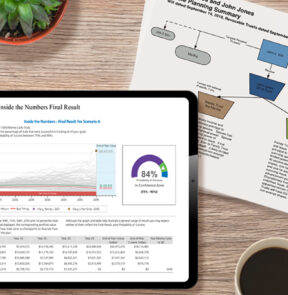Proactive planning helps you and your family maximize your financial resources and impact. As year-end approaches, in addition to the usual advice, including harvesting investment losses, fully funding your retirement plan, and reviewing your open enrollment elections, here are five actions you should consider:
1. Charitable Contributions
Accelerating charitable contributions into 2025 will benefit many taxpayers due to changes in itemized deduction calculations for 2026 and beyond. Beginning in 2026, there will be a 0.5% adjusted gross income (AGI) floor on itemized charitable deductions, which translates into the charitable itemized deduction being decreased by 0.5% of AGI. Coupling this with the itemized deduction limitations beginning in 2026, which essentially limit itemized deduction benefits to a 35% rate for those in the 37% tax bracket, 2025 becomes an attractive year to make charitable gifts. As a result, many taxpayers will benefit from accelerating charitable contributions, including pledge payments and funding their donor-advised funds (DAFs), into 2025. Keep in mind that deductions for appreciated securities are limited to 20% or 30% of AGI, depending on the charity recipient. This can be “topped off” with cash, where the deduction of up to 60% of AGI is now permanent for cash gifts to public charities.
Beginning in 2026, non-itemizers can reduce their taxable income by $1,000 per individual, or $2,000 for married filing jointly (MFJ), for contributions to public charities. This does not include DAFs.
2. Roth Conversions
Roth IRA assets are arguably the best assets for your heirs (or trusts for their benefit) to inherit. When most non-spousal beneficiaries inherit a Roth IRA, the assets can remain in the Roth IRA until December 31st of the tenth year following your date of death. During that time, there is tax-free growth on the assets, and when the assets are withdrawn from the Roth IRA, there is no income tax due. Although this may sound too good to be true, it is true. The “toll” charge to funding a Roth IRA is paying income taxes as the assets go into the Roth vehicle. From then on, you and your heirs can benefit from tax-free growth. Roth funding is particularly compelling for younger investors with a long-term horizon and older individuals with a federal or state taxable estate or with irrevocable or other trust beneficiaries in a higher income tax bracket than they may be today. Roth conversions are often done bit by bit over a number of years in order to take advantage of incremental tax brackets or in years when income is lower, especially between retirement and the beginning of required minimum distributions.
3. Giving and Wealth Transfer
As of January 1, 2026, the federal estate and gift tax exemption will rise to $15 million per person. This results in each person being able to transfer up to $15 million, either during their lifetime or at their death, to non-charitable beneficiaries without incurring a federal estate or gift tax. With the looming sunset removed, thoughtful and proactive wealth transfer planning should be the approach.
Focusing on 2025, if you have not already done so, you should consider gifting up to $19,000 to each individual that you wish to benefit if you have the financial capacity and doing so aligns with your wealth transfer goals. If you are married, you and your spouse can each gift $19,000 to the individuals of your choice. This is in addition to paying medical expenses and tuition costs directly to the provider of services. Note that the $19,000 annual gift tax exclusion amount will not increase in 2026.
4. State and Local Tax (SALT) Deductions
Maximize your SALT deduction by considering making any state or local estimated tax payments before December 31. For 2025 through 2029, the SALT deduction increased from $10,000 to $40,000. The $40,000 cap will further increase by 1% per year beginning in 2026, before it reverts back to $10,000 in 2030. This benefit is limited for high-income taxpayers. If your modified adjusted gross income (MAGI) is over $500,000, then the maximum deduction will decrease by 30% of MAGI over $500,000, which translates to the deduction being the $10,000 minimum for taxpayers with MAGI over $600,000. If you are married filing separately, the maximum deduction is $20,000. By making SALT estimated tax payments in 2025 instead of early 2026, you may be able to minimize your federal tax liability.
5. Energy Tax Credits
Although the electric vehicle tax credit ended September 30, 2025, there is still time to benefit from some energy-efficient home improvements, such as the installation of heat pumps and solar panels, if they are placed in service by December 31, 2025. The tax credit for electric vehicle charging equipment continues for installations completed by June 30, 2026.
It is never the wrong time to review your wealth plan and make sure your estate plan and beneficiary designations reflect your wishes. This year-end presents distinct opportunities to consider. If you would like to discuss your particular situation, please reach out to your Fiduciary Trust officer or to Sid Queler at queler@fiduciary-trust.com.



